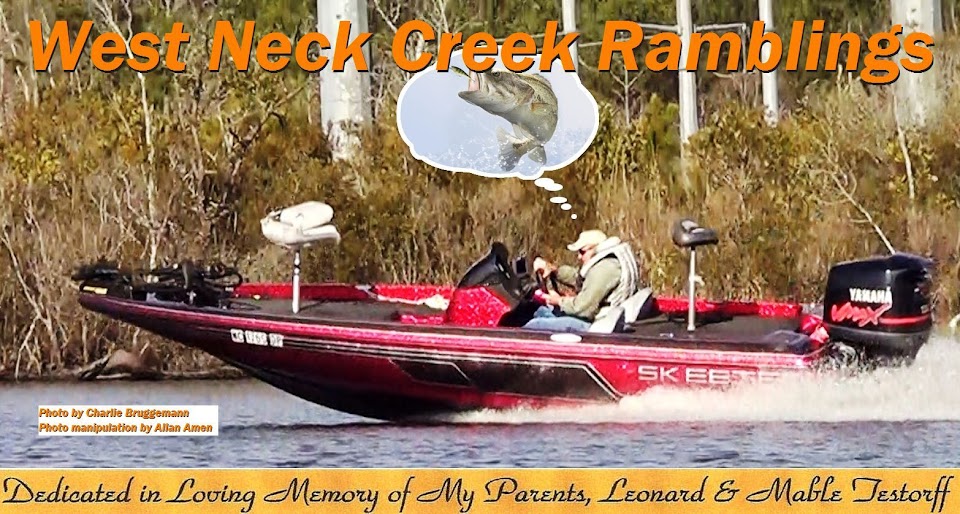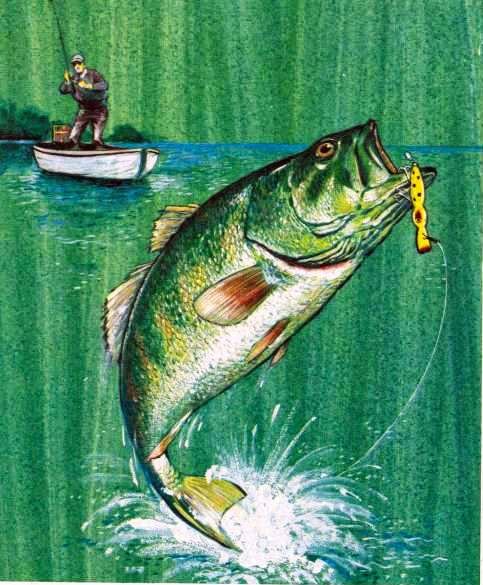Here's how one angler likened the retrieval of this lure: "It's the equivalent of doing 20 curls with a 20-pound barbell on your arm." Then he added, "You can imagine what it's like trolling with one of those suckers." The angler, of course, was referring to a Hellbender lure.
Some of this bait's history seems to be in dispute if you take what you find on the Internet at face value. For example, I found one source that says the famous Hellbender first started showing up in tackleboxes in the late 1950s. In another instance, though, there was some indication it only dates back to the 1960s, when it was owned by A. D. Manufacturing Co., a division of Hawk Fishing Lure Co. Whopper Stopper then acquired ownership and, about 1983, sold it to Heddon, which was bought by the Pradco family in 1984.
In yet another reference, it alleged the Hellbender was invented in Sherman, TX, and originally belonged to Whopper Stopper, then went to Heddon before being being sold to Pradco. There was no mention whatever of either A. D. Manufacturing or Hawk Fishing Lure Companies.
One fact that seems to be in agreement is that three sizes initially made up the Hellbender family: the 1000 series weighing 1/4-oz. and measuring 3 inches, the 1100 series weighing 1/2 oz. and measuring 3.75 inches, and the 900 series weighing 5/8 oz. and measuring 4.5 inches. Eventually, the 800 series magnum came along, weighing 7/8 oz. and measuring more than 5 inches.
Judged by both expert and novice in their day as the best deep-running, floating and diving lures for casting, trolling and spinning, the Hellbender was molded of Tenite plastic. They were advertised to "run true on retrieve" and to have an "action-producing wiggle plate, plus the added attraction of a spinner on the rear, making it irresistible."
Because of its unique construction, the Hellbender could be fished in many ways under different conditions. With its floating and deep-diving qualities, it was a natural for trolling, as depth could be controlled by length of line and speed of the boat's motor. The lure was at its best when bumping or running just above the bottom. If greater depth was needed, all you had to do was add a weight about 18 inches ahead of the lure.
Users were encouraged to troll over the same area where they had caught a fish at least twice. If they got a second strike or fish, they were urged to anchor within casting distance and work the area thoroughly, "as it is possible you have found a school, and several more fish may be taken if they are not spooked."
The Hellbender was advertised to be "deadly" when used as a casting lure. According to an old guide (from which the photo at the beginning was taken) for the lure I found online, "Running depth is governed by the speed of retrieve. In fact, it can be worked as a topwater lure by retrieving in twitches of the rod tip, causing it to dive under with a wiggle and float back to the top on a slack line.
"It is common knowledge that most game fish frequent cover, such as brush, stumps, logs, rocky shores, and weed beds. Such places are best fished with the Hellbender by casting past the cover if possible. Start with a fast retrieve to make the Hellbender dive, then slow the retrieve when passing the cover.
"In casting to the shoreline, the Hellbender will dive and follow the bottom contour until it reaches its maximum depth. Do not be afraid of casting the Hellbender in heavy brush. With its broad wiggle or diving plate, it will bounce off of, or flip over, most obstacles. But should it hang, give the lure slack line, and in most cases, it will float free, allowing you to continue the retrieve.
"Points, drop-offs, and underwater ledges or high spots may be fished with the Hellbender by casting to the shallows and retrieving to the deep water much the same as shoreline, allowing the lure to follow bottom contour to the deep water. It is sometimes more effective and desirable to cast from the more shallow water to the deep water, and in this case, retrieve the Hellbender fast until it hits the ledge or bottom, and then slow the retrieve." Thus concluded the guide but not the usefulness of the Hellbender.
In the mid-1980s, with the increasing popularity of striped-bass fishing, the magnum-sized version of the old lure took on new life. Anglers not equipped with downriggers started sorting out their Hellbenders. They tied a separate 2- or 3-foot length of line to the back end of the lure, attached a jig to the end of that line, and had a sort of poor-man's downrigger that would get down to the schooling stripers.
Although the Hellbender has, through the years, proved to be a good bass lure in its own right, an overwhelming number of stripers were getting hooked on the jig. Some fishermen even removed the hooks from the lure, using it strictly to drag a jig into the depths. The rig didn't hang up as much that way. One old battered lure was accomplishing as much as an expensive downrigger.
Problems arose, though, when the stripers moved deeper than 50 feet, as they often do during the summer months. The factory Hellbender couldn't reach that depth.
Someone at Whopper Stopper, however, solved this problem. The first step was to remove the connecting link from the diving bill of the hookless lure. Next, 20-to-25-pound line was threaded through a slip sinker (the heavier the weight, the deeper the lure would go). Then the line was threaded through the grommet in the diving bill and tied to a split ring. The line connecting trailing lures then could be tied to the split ring. Whopper Stopper recommended experimenting with different weights to determine what sizes would force the Hellbender to the desired depth. It was determined that, when trolling the angler's favorite lure tied on and running 10 to 20 feet behind a downrigger Hellbender, depths of more than 75 feet could be attained.
Over the years, the Hellbender, with its unique heart-shaped diving lip, has held many state and world records for most freshwater species.




No comments:
Post a Comment